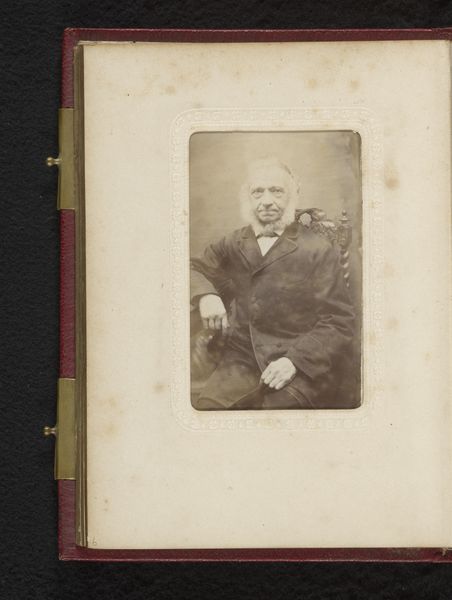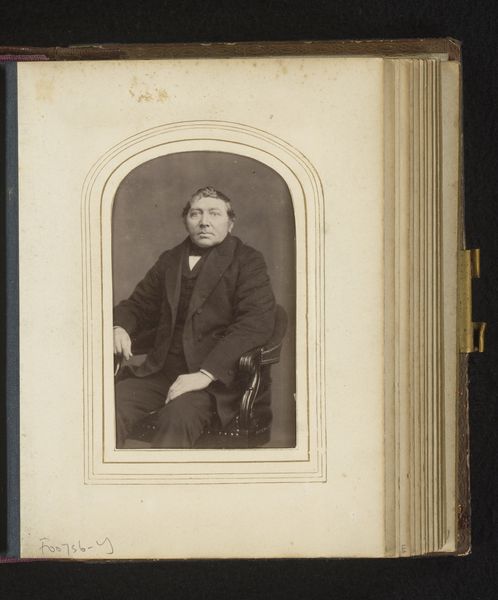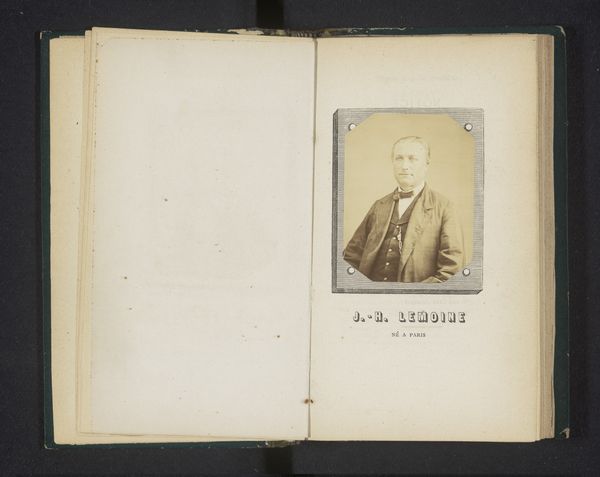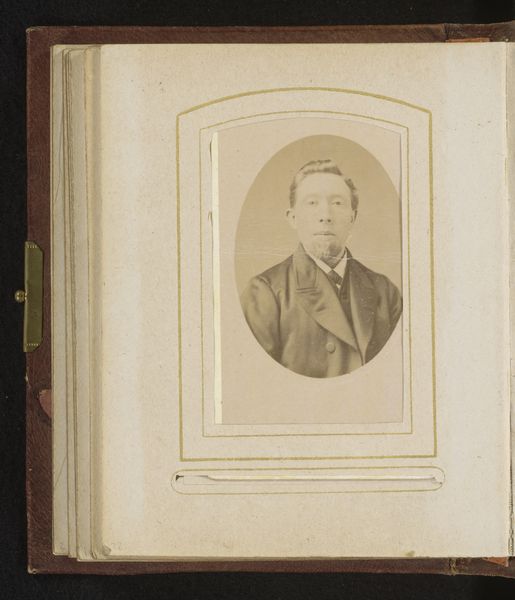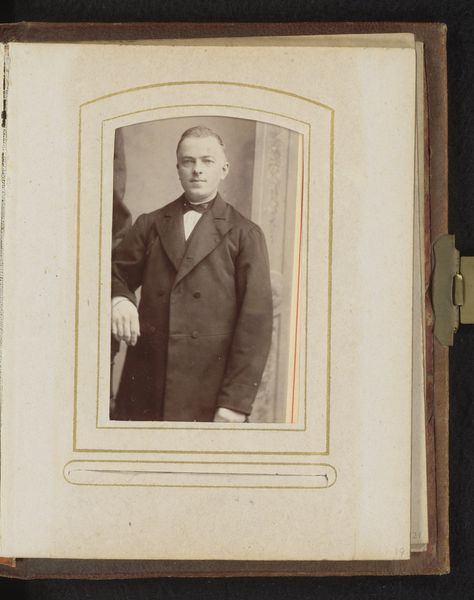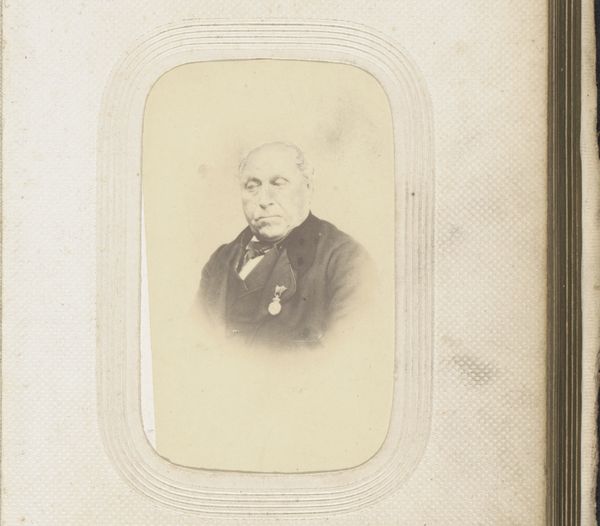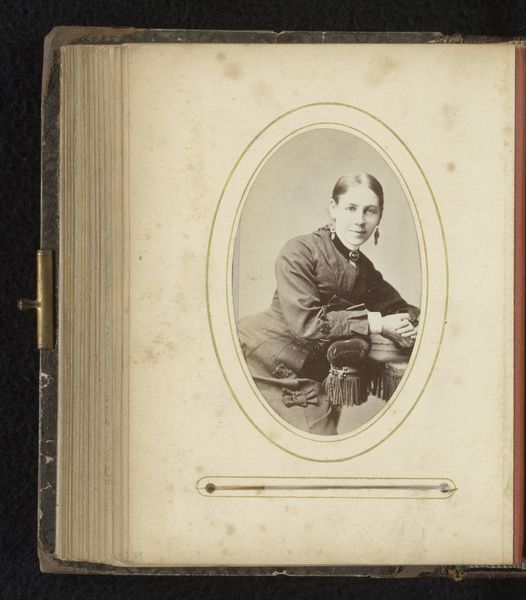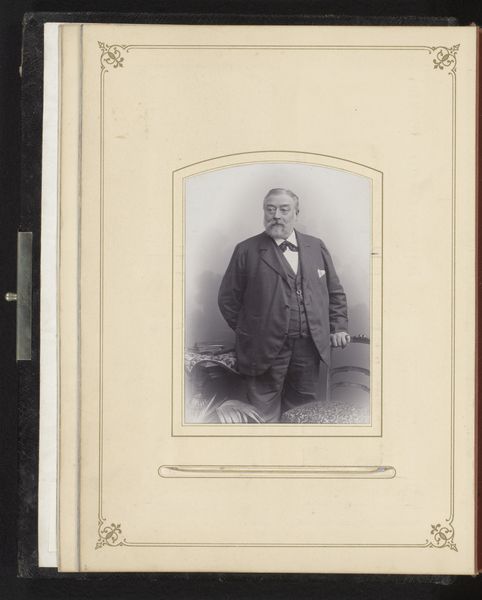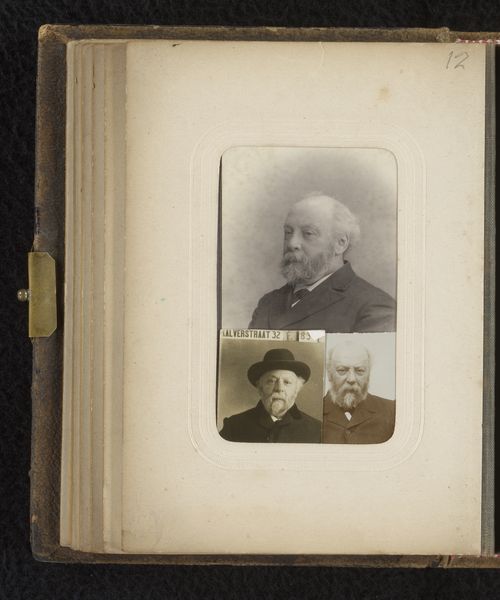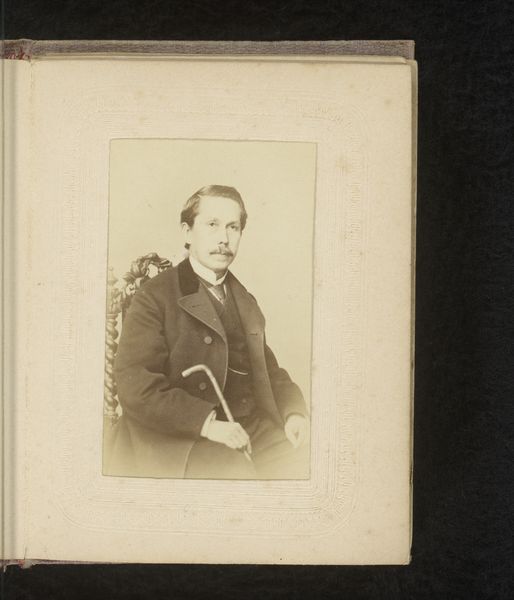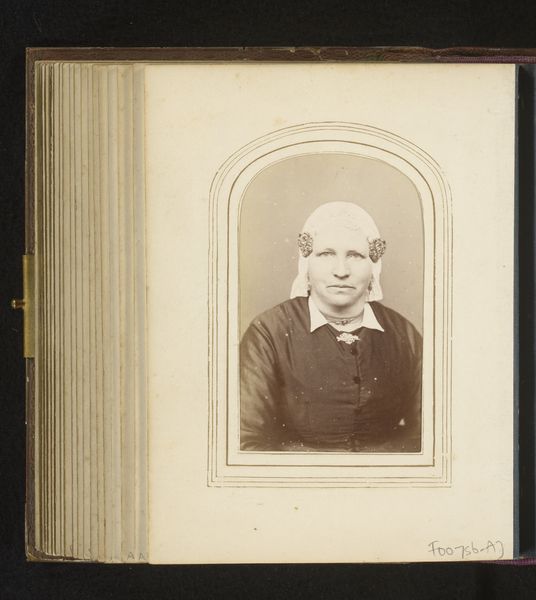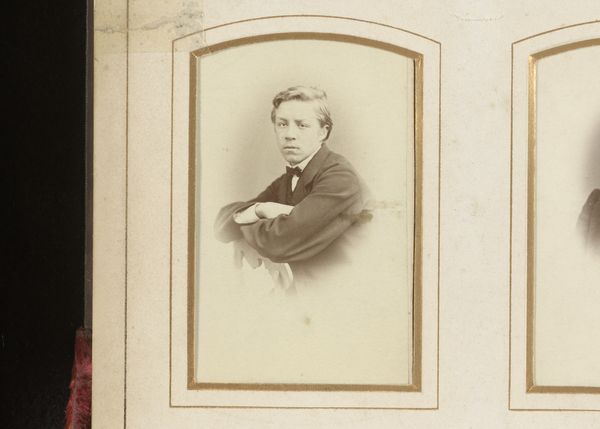
photography, albumen-print
#
portrait
#
photography
#
albumen-print
#
realism
Dimensions: height 106 mm, width 63 mm
Copyright: Rijks Museum: Open Domain
Curator: Here we have a fascinating albumen print titled "Portret van een man," attributed to George Emberson & Sons and likely created sometime between 1875 and 1900. What's your first take? Editor: It feels like looking at a forgotten relative, doesn't it? There's this curious gent, preserved in sepia tones. His gaze is kind but also seems to hold a lifetime of secrets or perhaps a funny story he is about to tell. The way he's placed in an old photo album also evokes a profound sense of memory. Curator: Absolutely, the albumen print process itself, so popular then, signifies preservation, but beyond that, portraiture of this era speaks to bourgeois values, memorializing status, character. The symbols become more than mere aesthetics. Editor: Look at the small floral detail pinned to his lapel! Such a delicate counterpoint to the dark suit. It whispers of beauty amid formality, adding an interesting dimension. Does it signal some achievement or affiliation, or simply spring, newness amidst what feels like fading empire? Curator: Very astute. That floral embellishment could well indicate societal membership or a specific event celebrated in the picture, further underscored by the careful pose. Everything signals deliberate construction of image, as the pocket watch adds a flourish. In those years, that would certainly indicate success, an attention to time—and value. Editor: Time's winged chariot and all that... But his eyes also express more than a wealthy background, or membership to social organization. I sense kindness, acceptance, or maybe just weary amusement. Is that also what photographers sought to express through portraits during the later 19th century? Or rather capture it, distill it? Curator: Portrait photography by the late 1800's indeed carried that ambition, though filtered through conventions. Here, you are seeing it in that face, framed as he might like to be recalled. It brings up some powerful notions about who controls a lasting legacy or interpretation. Editor: I hadn’t thought of it that way. Almost like he has a say in how history will consider him—or who remembers him after the picture fades in its album. Curator: It all adds richness—cultural cues plus that intangible “something” you identified in his look...It has me pondering this portrait’s legacy, how this resonates even a century and a half hence. Editor: Right. It certainly gets me wondering about what stories my portrait will speak for when I'm but sepia in some dusty attic of time.
Comments
No comments
Be the first to comment and join the conversation on the ultimate creative platform.
